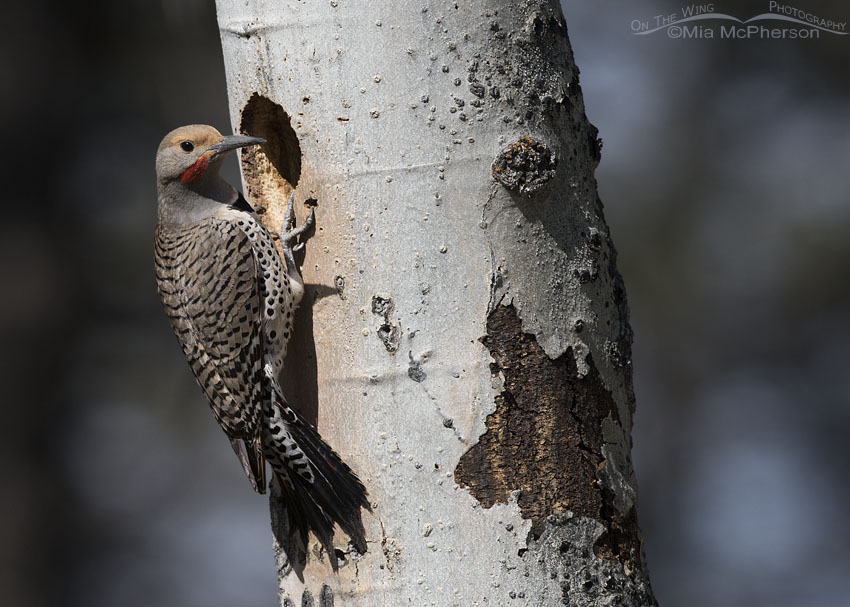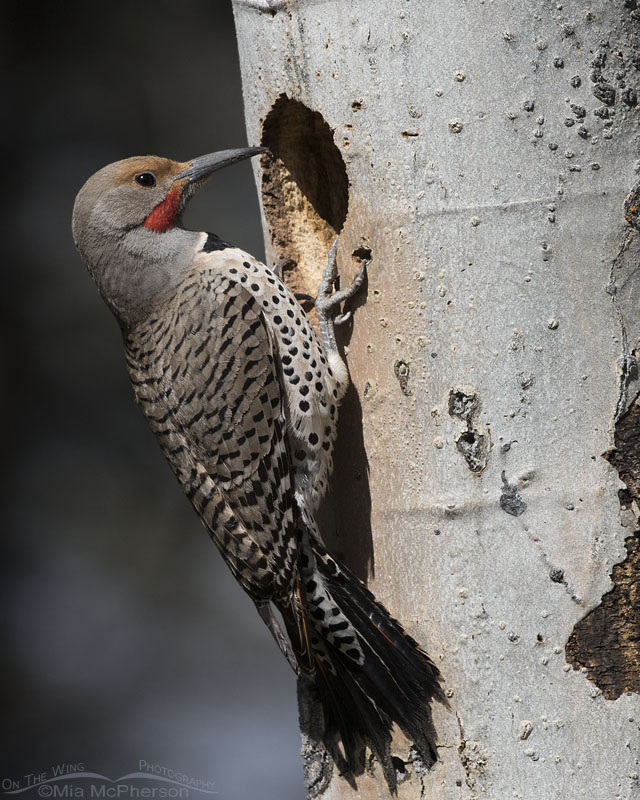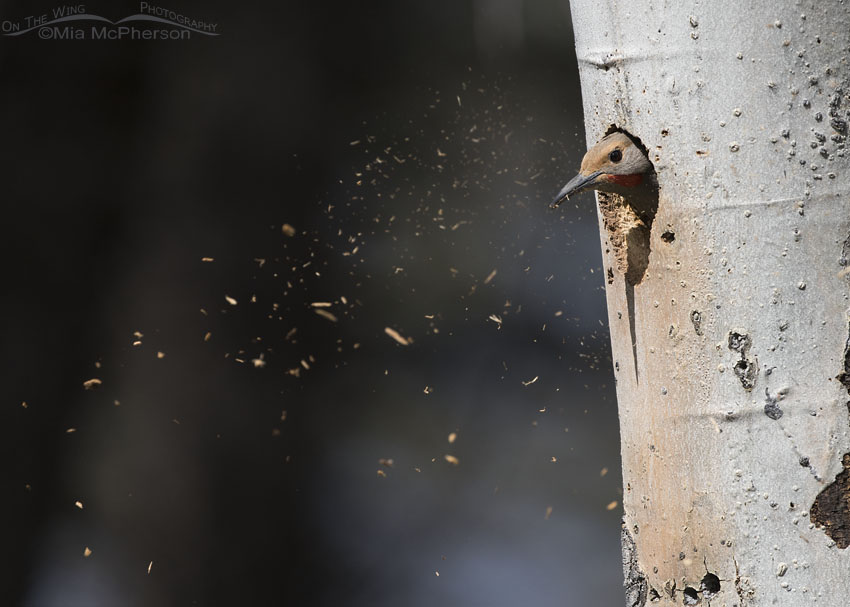 Northern Flicker male outside his nesting cavity – Nikon D810, f8, 1/1600, ISO 500, -0.7 EV, Nikkor 500mm VR, natural light
Northern Flicker male outside his nesting cavity – Nikon D810, f8, 1/1600, ISO 500, -0.7 EV, Nikkor 500mm VR, natural light
I’m growing a little weary of cloudy skies and not being able to get out into the field to photograph the birds that I know are migrating in or those that are getting ready for their breeding season. I know for sure that Turkey Vultures and Western Grebes have arrived here in northern Utah and I am anxious to see them myself.
We do need the moisture but I sure wish it would only rain overnight and only be cloudy late in the day, I don’t want much, do I? It is the 23rd of March and I have only been out shooting six times this month, I need more, I need the birds and I need to be in the field. Okay, enough whining.
I dug into my archives and picked these Northern Flicker photos from May of 2015 to share today because I saw a Northern Flicker yesterday and thought of how they will soon start excavating their nesting cavities to rear their young in. These photos were taken in the Caribou – Targhee National Forest in Clark County, Idaho.
Northern Flickers are large woodpeckers that are year round residents here in the Salt Lake Valley and even though they prefer forests and open woodlands they have adapted to urban areas with trees so I do see them here in town.
 Northern Flicker male close up at an Aspen nesting tree – Nikon D810, f10, 1/1250, ISO 500, -0.7 EV, Nikkor 500mm VR, natural light
Northern Flicker male close up at an Aspen nesting tree – Nikon D810, f10, 1/1250, ISO 500, -0.7 EV, Nikkor 500mm VR, natural light
I’d much prefer photographing them in the mountain forests though with only the sounds of birds calling and the breeze rustling leaves instead of the harsher sounds of a city assaulting my ears. It can be challenging to locate their nesting cavities but with keen eyes, by moving slowly through wooded areas on foot or by vehicle, having a crap load of patience and listening for their calls it is possible to find their nesting trees.
If you zip along forested roads the chances of finding them are much slimmer because they are far harder to spot. I’ve found that by going slower in forests or forested areas it makes it more likely and easier to spot Northern Flickers or any other birds that are typically found in the trees and forests.
 Male Northern Flicker excavating a nest – Nikon D810, f7.1, 1/2000, ISO 500, -0.7 EV, Nikkor 500mm VR, natural light
Male Northern Flicker excavating a nest – Nikon D810, f7.1, 1/2000, ISO 500, -0.7 EV, Nikkor 500mm VR, natural light
I’m hoping that I can find a Northern Flicker excavating a nesting cavity this year because it is as much fun watching them tossing bits of wood out of the tree as it is to photograph them doing it.
Shoo clouds, shoo.
Life is good.
Mia
Click here to see more of my Northern Flicker photos plus facts and information about this species.
Note: These photos were taken from inside a vehicle being used as a mobile blind with sufficient distance between the nesting tree and the vehicle so the flicker went about its business naturally. The comfort, safety and well being of the birds is always more important to me than the photos, especially during the nesting season.
Ethics on photographing nesting birds:
- Do not approach too closely;
- If the birds show any sign of distress, back away;
- Don’t trim leaves, twigs or branches to get a clearer shot, you may inadvertently attract predators or cause the eggs/chicks to over heat;
- Follow local, state and federal guidelines concerning nesting birds;
- Don’t harass the birds to get an action shot;
- Don’t stay a long time with nesting birds or chicks, that disrupts their normal behavior;
- Always remember that your scent may draw predators to the area of nesting birds or birds with chicks.
For more information on the ethics of photographing nesting birds or chicks check out the Principles of Birding Ethics published by the American Birding Association.


Truly wonderful pics Mia. Another trifecta for you…great colors, detail and composition. Good rules for the “road” too. Thanks.
Fabulous shots, especially the last one, Mia! I hope you can get back out among ’em soon!
Beautiful, beautiful things.
Thank you.
The second shot is a classic..a beautiful images of that wonderful bird. I found a Flicker feather once while backpacking in the mountains and always wore it in my red Crusher hat( along with a clevis pin, some safety pins and moleskin), for good luck…never had a real problem so it must have worked…
Cool shots, Mia.
Your lucky! We got 20 cm of snow overnight!
Great series of nicely contrasted shots documenting the flicker’s behavior, Mia.
I love that last photo. We, in the Niagara area have had sunshine for days which is wonderful except the temperatures are still below freezing. The birds seem to be hunkered down and not out & about. No signs of nesting yet.